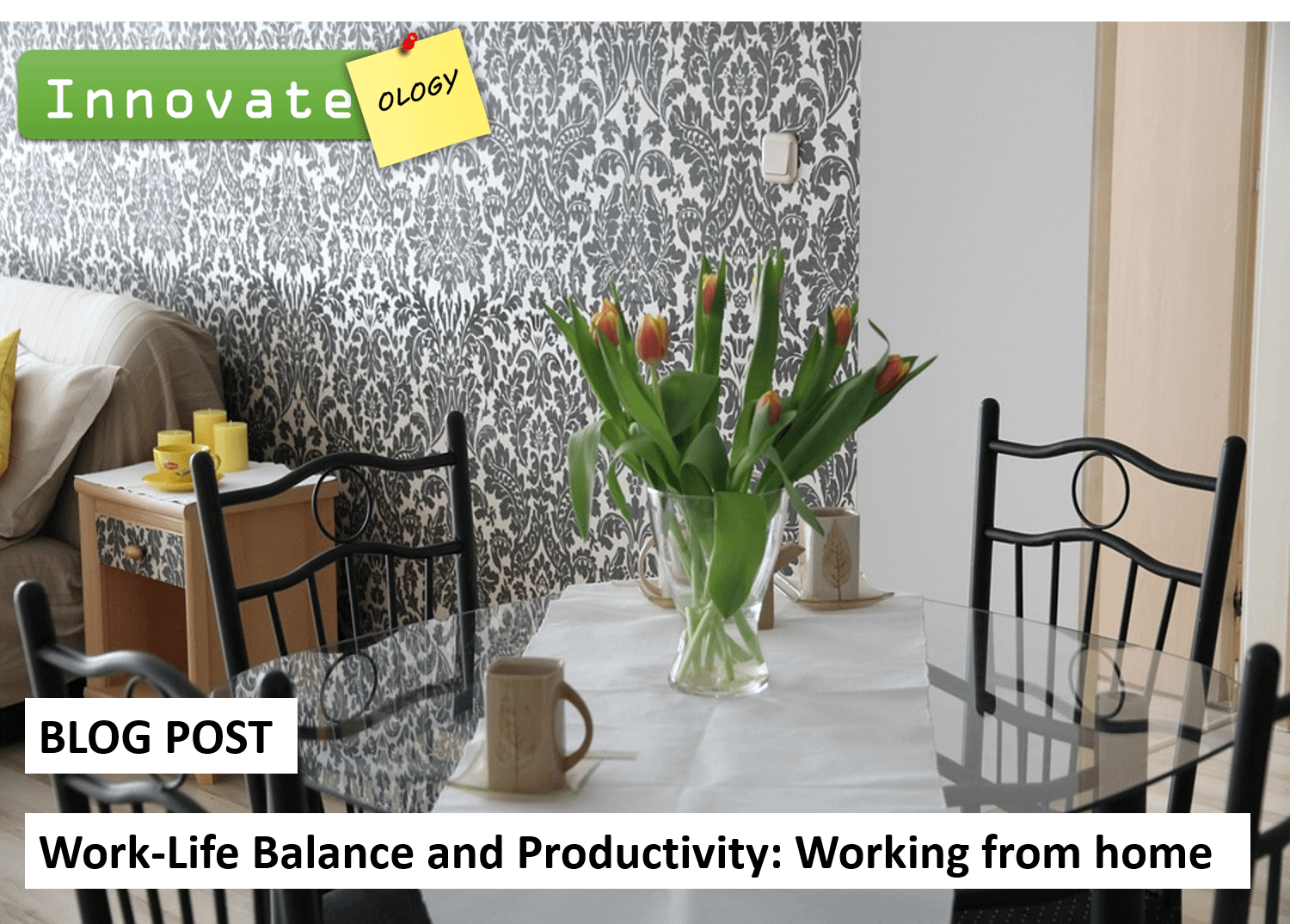Work-Life Balance and Productivity: Working from home

For me, looking back at my previous life in large corporate, I did not have a good work-life balance as I was a more of workaholic…spending minimum 11-12 hours a day working and driving plus working weekends traveling for market research or conventions.
Now today I’m actually out of corporate and work part-time for myself in business and it’s the opposite. Working at home I have a harder time focusing on work productivity due to more overwhelming family life issues along with my short ADD attention span. I work less hours but struggle to get it done.
In my corporate working world as a marketer my ADD (attention deficit disorder) mindset worked well as you were the hub on the wheel that gave direction to all the spokes…like sales, manufacturing, market research, etc. Having ADD at home as a sole business owner is much harder as you don’t have teams to keep track with! Plus I have one elderly parent that has serious physical health issues for the past year and another elderly parent to handle at a moment’s notice.
Productivity at home isn’t about the setting; it’s about the mind-set. And it starts by analyzing how you work the best.
How do you work best at home?
Take a moment and ask yourself about your personal work style. How can you “innovate” and do it better? Ask yourself where, when, and how––you perform to your highest level.
· Look at WHEN you do your work at home. Do your intense work in your highest productivity time periods. What are you? Morning mid-morning afternoon or night person? Regardless your timing, get dressed in comfy work clothes as soon as you wake and begin working on something first thing in the morning to knock off some of your projects. Save your most important projects for when you are the most awake and alive.
· Look at WHERE to do your work. For select work you can go to Starbucks or a college library where you don’t have home distractions. I also keep mindless items to work on in my pocketbook when I am waiting in a doctor’s office. To do work at home have specific work spaces. Maybe each large project has a separate space. I have 4 spots/ tables…one for planning, one for business, one for artwork and one for my father’s computer work I need to do. To stay in your space and focus, I have heard of fiction writers who actually tie themselves to a chair until finish their work. Or they wear a hat to signify their working time and they cannot start something else till they take it off. Or make a paper bracelet with what you have to do that day so you don’t avoid it. Or put a select music like jazz or history channel podcast for each particular project.
· Look at HOW you like to do your work. How to do you like to communicate with people? Do you like phone, email, in-person, or video conferencing? Keep communicating with people your favorite way and they will start to communicate to you back in this way.
· Look at HOW you coordinate your work. If you have ADD then don’t work against your nature. I lay out 2-3 projects and jump between them for one day rather than working on just one project. Another person may stay on one project until it is done before starting another.
o How can you visually organize your work? As a visually reminder, buy a stick-and-peel whiteboard sheet in your working room and put up your top work priorities. Or use it for brainstorming. On Amazon you can buy at 75x20inches stick-and-peel whiteboard to stick to any wall that won’t leave marks for only $10.99. Cut this sheet up into 3 pieces for 3 projects.
o For each project, leave some specific question that still needs to be done so your brain is waiting to come back to do it. I write that question down and tape it to my computer or specific work area. Always leave your work with a question like this as your brain will want to jump into it the next time as it will subconsciously be working on your question.
o Or if starting a new project, prepare and lay out all the items you need for a project but don’t start on it till your next work time period.
· I think PLANNING and PREPARING are key!
o For PLANNING, first set your goals for the year by category, then set metrics quarterly and monthly.
o When PLANNING your next project, visualize it first and make a decision what it looks like. Try to draw or write down what that project looks like finished.
o Spend a whole day each week PREPARING. Preparing your projects, your days, and your quarter. Maybe on a Sunday before the week work or on a Friday when all your projects are on your mind. .
In summary, ask yourself where, when, and how––you perform to your highest level. Only you can answer these questions! Hope this helps!
